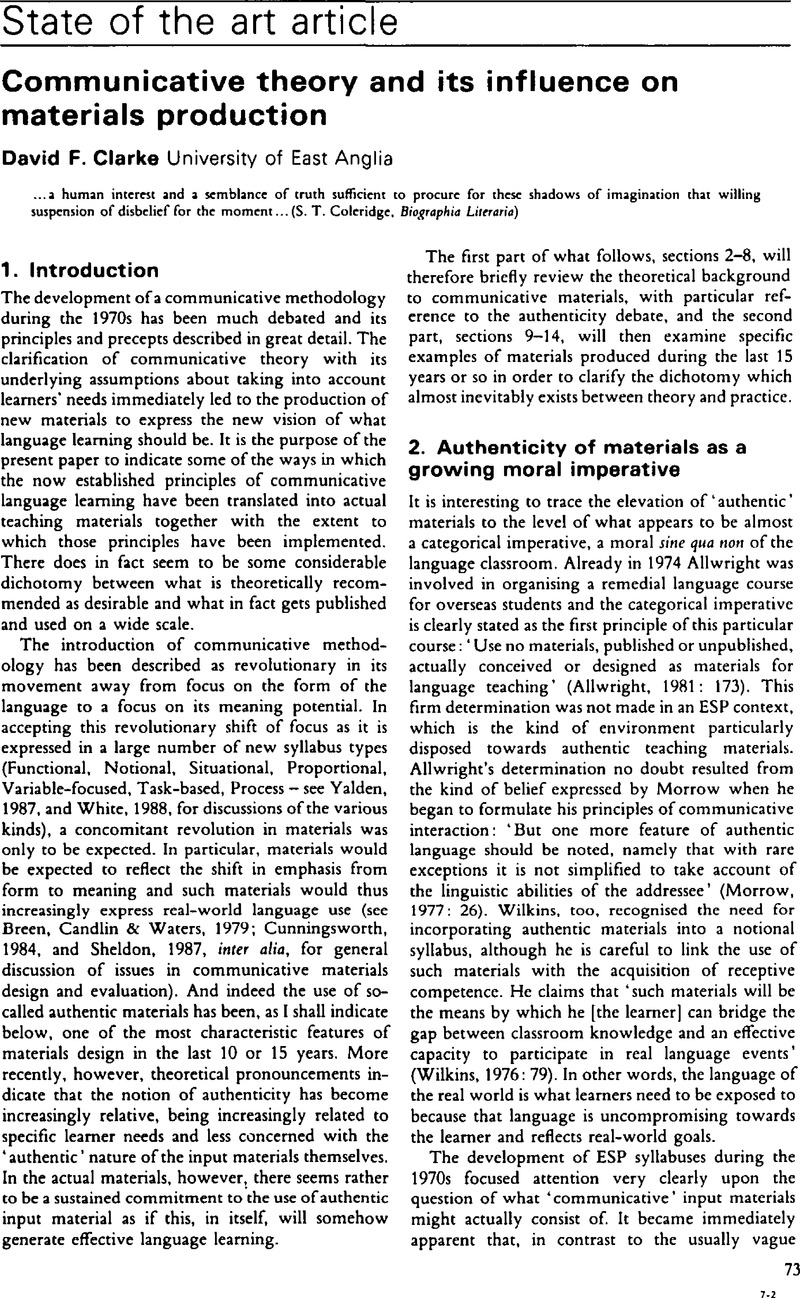Crossref Citations
This article has been cited by the following publications. This list is generated based on data provided by Crossref.
Joiner, Elizabeth G.
1990.
Choosing and Using Videotexts.
Foreign Language Annals,
Vol. 23,
Issue. 1,
p.
53.
Baddock, Barry
1991.
Film, authenticity and language teaching.
The Language Learning Journal,
Vol. 3,
Issue. 1,
p.
16.
Hart, Ian
1992.
Video, foreign languages teaching and the documentary tradition.
System,
Vol. 20,
Issue. 1,
p.
1.
White, Ron V.
1992.
Innovation in Curriculum Planning and Program Development.
Annual Review of Applied Linguistics,
Vol. 13,
Issue. ,
p.
244.
Evans, Stephen
1996.
The Context of English Language Education the Case of Hong Kong.
RELC Journal,
Vol. 27,
Issue. 2,
p.
30.
English, Kathryn
Mc Donnell, Tina
and
Carter-Thomas, Shirley
1996.
Can old dogs learn new tricks? An account of an experimental course using the Internet in the classroom.
ASp,
Vol. 11-14,
Issue. ,
p.
399.
Hyland, Ken
2003.
Second Language Writing.
Madeira, Fábio
2005.
Uma análise dos critérios dos professores na preparação de material didático para cursos de língua estrangeira de conteúdo.
Trabalhos em Linguística Aplicada,
Vol. 44,
Issue. 1,
p.
73.
Waters, A.
2007.
Ideology in Applied Linguistics for Language Teaching.
Applied Linguistics,
Vol. 30,
Issue. 1,
p.
138.
Wee, Lionel
2008.
The technologization of discourse and authenticity in English language teaching.
International Journal of Applied Linguistics,
Vol. 18,
Issue. 3,
p.
256.
Polat, Nihat
2010.
Pedagogical treatment and change in preservice teacher beliefs: An experimental study.
International Journal of Educational Research,
Vol. 49,
Issue. 6,
p.
195.
임미진
2010.
Authenticity revisited: On the basis of movies.
STEM Journal,
Vol. 11,
Issue. 1,
p.
129.
Wall, Dianne
and
Horák, Tania
2011.
THE IMPACT OF CHANGES IN THE TOEFL® EXAM ON TEACHING IN A SAMPLE OF COUNTRIES IN EUROPE: PHASE 3, THE ROLE OF THE COURSEBOOK PHASE 4, DESCRIBING CHANGE.
ETS Research Report Series,
Vol. 2011,
Issue. 2,
Seferaj, Kristjan
2014.
International Perspectives on Materials in ELT.
p.
89.
Dakowska, Maria
2016.
Researching Second Language Learning and Teaching from a Psycholinguistic Perspective.
p.
183.
Ozverir, Ildeniz
Herrington, Jan
and
Osam, Ulker Vanci
2016.
Design principles for authentic learning of English as a foreign language.
British Journal of Educational Technology,
Vol. 47,
Issue. 3,
p.
484.
Trabelsi, Soufiane
2016.
Issues in Materials Development.
p.
145.
Castillo Losada, César Augusto
Insuasty, Edgar Alirio
and
Jaime Osorio, María Fernanda
2017.
The Impact of Authentic Materials and Tasks on Students’ Communicative Competence at a Colombian Language School.
PROFILE Issues in Teachers' Professional Development,
Vol. 19,
Issue. 1,
p.
89.
Huang, Pingping
2019.
Textbook interaction: A study of the language and cultural contextualisation of English learning textbooks.
Learning, Culture and Social Interaction,
Vol. 21,
Issue. ,
p.
87.
Withanarachchi Samaranayake, Sarath
2021.
The Effects of Authentic Materials Using Role-playing Activities on Oral Proficiency: A Case Study of Thai Undergraduate Students.
SSRN Electronic Journal ,


